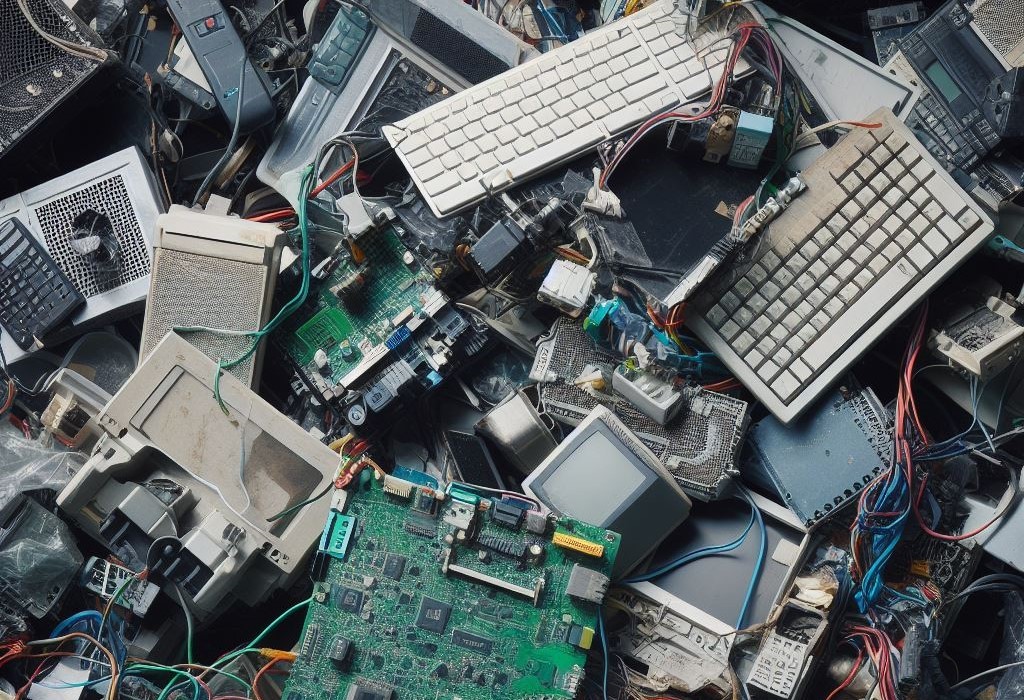People 'n' Issues
‘Circular design’ gives
e-waste a second life
We must design for a more circular economy, writes CHRIS BUCHANAN, client solutions director of Dell Technologies South Africa.
I’m always surprised by the statistics about electronic waste (e-waste) and how little is understood about this critical environmental issue. A recent study of Gen Z and Millennials found 60% of adults don’t know what e-waste is, and 57% didn’t realise these items contribute to pollution. E-waste is anything with a plug, battery or cable – electronics that have reached the end of their useful lives.
Every year we recognise International E-Waste Day on 14 October, an annual campaign to raise awareness about the growing problem of e-waste and promote responsible e-waste management.
We often talk about environmental issues associated with this growing waste stream, but when I think about e-waste, I see opportunity. As product design engineers, my team makes our technology more sustainable by incorporating materials with reduced carbon emissions. This could be a sustainable material like recycled carbon fibre or one produced with renewable energy like our hydropower aluminium. At Dell, a lot of thought and research goes into the materials we choose and the processes we use to manufacture them. To help stem the flow of e-waste, we go ‘back to the future’ and strive to design to extend product life and more easily access components for recyclability.

Chris Buchanan, client solutions director of Dell Technologies South Africa.
Our Commitment to Circularity
At Dell, we are committed to keep materials in use longer, and our 2030 goals span the full lifecycle of our products – from design through manufacturing, shipping and recovery:
· For every metric ton of our product customers buy, we will reuse or recycle one metric ton.
· We will make 100% of our packaging from recycled or renewable material or will utilise reused packaging.
· We will make more than half of our product content from recycled, renewable or reduced carbon emissions material.
Designing for the End from the Start
When we design products, we must design for circularity. Driving a circular economy will directly reduce the greenhouse gas emissions associated with producing new materials. We work to incorporate more sustainable materials into our technology, but we also optimise the materials we use. We reduce the number of materials wherever possible and make sure we don’t use anything that is not absolutely necessary or that makes the device difficult to recycle at end–of–life. And we design our products to ensure materials are more easily harvested for reuse and recycling.
The Opportunity in E-Waste
Our recovery and recycling services support e-waste reduction and also provide a valuable stream of materials that can be repurposed or recycled for use in new products. Since 2007, Dell has recovered more than 1.1-billion kilograms of used electronics. If a product reaches end-of-life and repair or reuse is not possible, we employ closed-loop strategies, where applicable, to create new products by recycling select materials from out-of-use technology. In 2014, we pioneered the use of closed-loop plastics from recovered technology, and we also use closed-loop rare earth magnets and aluminium.
Bottom line – to meet our goals and increase sustainable and recycled materials in our technology, we need more products returned so we can harvest more materials. We can all help by emptying our closets and cabinets and returning old electronics. Dell makes it convenient and secure to return and recycle end-of-life electronics and accessories. In addition to reducing e-waste, you are also extending the life of materials that can be scaled into new products.
We have made good progress, but still have a lot of work ahead to achieve our goals, and it will take all of us working together to drive a more circular economy.
For more information visit: Accelerating the Circular Economy .



















